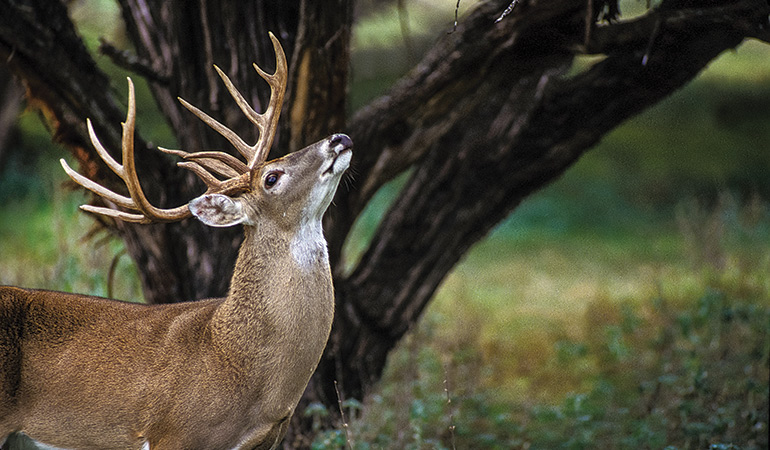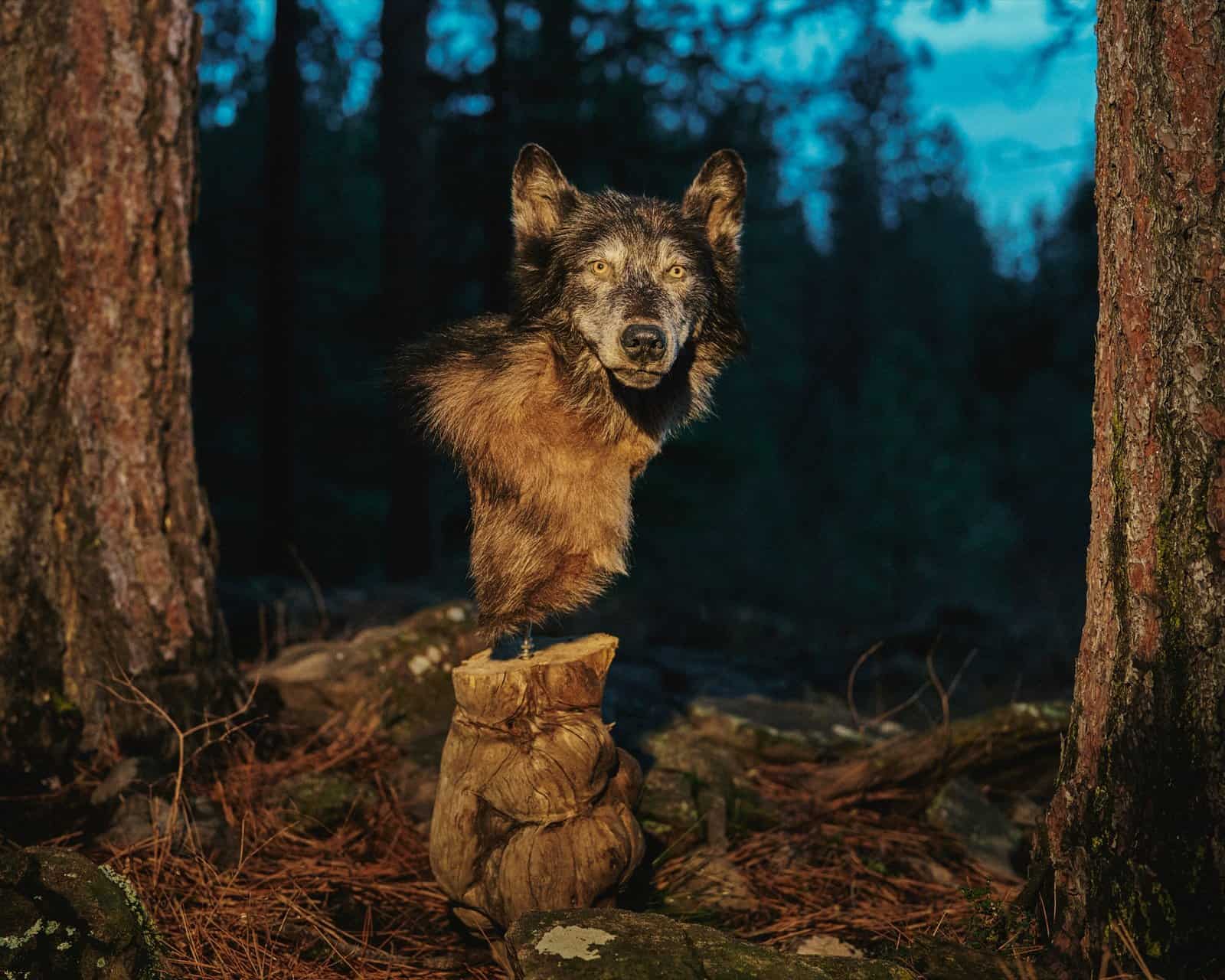Elk tracks are typically heart-shaped, with pointed ends and splayed toes. They can be large and deep.
Elk tracks are an essential indicator of elk presence in an area. By identifying these distinctive tracks, wildlife enthusiasts and hunters can gain valuable insights into elk behavior and movement patterns. Understanding the characteristics of elk tracks, such as their size and shape, can enhance tracking skills and increase the chances of successful wildlife encounters.
Whether exploring the wilderness for adventure or conducting scientific research, recognizing elk tracks is a valuable skill that can lead to a deeper appreciation and understanding of these majestic creatures. In the following sections, we will delve into the specifics of elk tracks and how to identify them in various types of terrain.

Credit: issuu.com
The Anatomy Of Elk Hooves
Physical Characteristics
Elk hooves are pointed, hard, and feature a two-toed design.
- Pointed shape helps in penetrating different types of terrains.
- Each hoof consists of a tough outer shell protecting soft inner tissue.
Adaptations For Movement
Elk hooves have specialized features for efficient navigation and agility.
- Hooves are sturdy and durable to support elk’s weight and speed.
- The concave underside aids in gripping uneven surfaces like rocks and snow.
Interpreting Elk Tracks
Elk tracks are identifiable by their distinct two-toed hoof print, which measures around 4 inches in length, evidencing their massive size. These tracks can be found in soft soil or snow. Additionally, elk tracks appear deeper in the front due to the animal’s weight distribution, making them easily recognizable for tracking and wildlife observation activities.
Identifying Elk Tracks
Elk tracks are easily recognized by their large size and distinctive shape.
The tracks typically have a heart-shaped outline with pointed tips.
Distinguishing Age And Sex
To identify the age of an elk, look for tracks that appear more worn and rounded for older individuals.
For determining the sex, male elk tracks are generally larger and more robust, while female tracks tend to be smaller and delicate.
Tracking Elk In Their Habitat
Habitat Preferences
Elk, also known as wapiti, are majestic creatures that are commonly found in the wilderness of North America. Their habitat preferences are diverse, ranging from meadows and grasslands to forests and mountains.
In the mountains, elk can be found in areas with ample forage and water sources. They prefer grazing in open meadows during the early morning and late evening, and seek cover in dense forests during the day.
Behavioral Insights
Elk are primarily diurnal animals, meaning they are most active during the day. They often migrate between higher elevations in summer and lower elevations in winter to seek forage and shelter.
During the rutting season, which typically occurs in the fall, bull elk exhibit aggressive behaviors and vocalize through bugling to attract mates. This behavior can be used to track and locate elk during the mating season.

Credit: issuu.com
Conservation Significance
Elk tracks are distinctive with heart-shaped imprints and two pointed ends, clearly visible in soft soil or snow. Identifying these tracks can lead to a deeper understanding of elk behavior and their conservation significance. Monitoring their presence can help protect their habitats and ensure their survival.
Environmental Indicators
Elk tracks are more than just marks left by an animal’s hooves. They serve as environmental indicators, offering valuable insights into the landscape’s health and the presence of various species. These tracks provide important clues about the elk population, their movements, and their interactions with the surrounding ecosystem. By examining elk tracks, scientists and conservationists can make informed decisions regarding wildlife management and habitat conservation.
Conservation Efforts
Understanding elk tracks can contribute significantly to conservation efforts. By studying the size, depth, and frequency of elk tracks, experts can assess the population’s dynamics, such as the number of individuals, their age classes, and distribution patterns. This information helps guide conservation strategies that aim to protect and enhance elk habitats. By focusing on areas with high elk activity, conservationists can prioritize the preservation of these ecosystems and the species that depend on them.
Moreover, elk tracks can also aid in identifying potential threats and mitigating their impact. For example, increased human presence near elk habitats may result in altered movement patterns or even displacement of the elk population. By monitoring elk tracks, scientists can detect these changes early on and implement measures to minimize disturbance and promote coexistence.
Conservation efforts extend beyond elk populations themselves. Elk tracks can be indicators of the overall health of an ecosystem. By observing the state of vegetation within and surrounding elk tracks, experts can assess factors such as grazing pressure and plant biodiversity. This information helps address potential imbalances and ensure long-term ecological stability.
Human-elk Interactions
Elk tracks are distinctive with pointed tips and round edges, resembling elongated heart shapes found in soft soil or snow. These imprints can indicate the presence of elk in the area, offering insights into their movements and behavior.
Understanding human-elk interactions is crucial when it comes to both hunting considerations and wildlife viewing tips. Elk are majestic creatures that symbolize wilderness and embody the beauty of nature. However, encountering an elk in the wild can be an exhilarating yet potentially dangerous experience. Whether you’re an avid hunter or simply an enthusiast, it’s essential to have a deep understanding of the ways humans and elk can interact.
Hunting Considerations
When it comes to elk hunting, safety is paramount. While the pursuit of this magnificent game animal can be exciting, it is essential to follow ethical hunting practices and adhere to all applicable regulations. Here are a few key considerations:
- Know the hunting seasons and obtain the necessary permits and licenses before heading into the field.
- Respect the elk’s natural habitat and try to minimize disturbance to their routines.
- Study and understand elk behavior and biology to increase your chances of success.
- Always prioritize safety and carry the appropriate equipment, such as bright-colored clothing and a means of communication.
- Take the time to properly identify elk tracks and signs, ensuring you’re following a fresh trail and making ethical harvest decisions.
Wildlife Viewing Tips
For those who prefer observing elk in their natural habitat without hunting, wildlife viewing can provide an incredible experience. To enhance your wildlife watching adventures, consider the following tips:
- Respect the elk’s space by maintaining a safe distance. Remember, they are wild animals and should not be approached too closely.
- Bring binoculars or a camera with a telephoto lens to observe elk from a distance without causing disturbance.
- Visit wildlife refuges, national parks, or areas known for elk populations for a higher likelihood of sightings.
- Learn to recognize elk tracks and signs, as they can lead you to potential viewing sites.
- Be patient and aware of your surroundings. Elk are often most active during dawn and dusk, so plan your outings accordingly.
Now that you have a better understanding of the considerations involved in both elk hunting and wildlife viewing, you can embark on your journey well-prepared and educated. Remember, respecting the elk’s habitat and safety should always be your top priority, whether you’re seeking a trophy or simply enjoying the beauty of these majestic creatures in their natural environment.

Credit: www.northamericanwhitetail.com
Frequently Asked Questions For What Do Elk Tracks Look Like
What Do Elk Tracks Look Like?
Elk tracks typically resemble large, elongated hoofprints with a pointed front and rounded back. They have a distinctive heart-shaped overall shape, which helps differentiate them from other ungulate tracks. The track size can vary, but adult elk tracks measure around 4 to 5 inches in length.
Conclusion
Identifying elk tracks is a crucial skill for outdoor enthusiasts. Recognizing the unique characteristics of elk tracks, such as their large size and distinct shape, can enhance your wilderness experience. By paying attention to these details, you can increase your chances of spotting these majestic creatures in their natural habitat.
Happy tracking!



